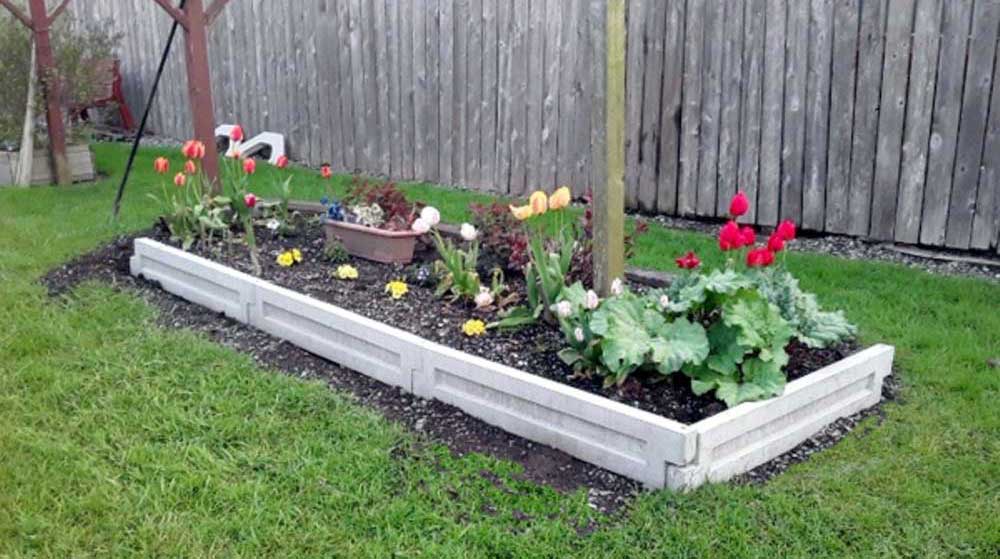For gardeners looking to build raised beds that will stand the test of time precast concrete is an ideal material choice. Concrete raised garden beds provide a sturdy permanent growing structure that won’t rot, warp or deteriorate over many seasons of use.
In this comprehensive guide, we’ll explore the benefits of precast concrete raised beds, provide tips for choosing and installing them, and showcase creative examples to inspire your own garden design. Let’s dig in!
What Are Precast Concrete Raised Beds?
Precast concrete raised beds are constructed from premade reinforced concrete panels that lock together to form the sides of the raised bed. The concrete panels are precast, meaning they are formed and poured offsite at a concrete manufacturing facility then delivered to the end user ready for installation.
This differs from poured concrete raised beds, where the wet concrete is poured directly into forms built onsite to create the garden bed structure. With precast concrete beds, the concrete panels are premade and cured offsite under controlled conditions.
Benefits of Precast Concrete Raised Beds
There are many advantages to choosing prefabricated precast concrete beds for your vegetable or flower garden:
-
Durability – Concrete raised beds can last 50 years or more. They won’t rot, warp, or degrade like wood beds.
-
Strength – Reinforced precast concrete can withstand frost heave and won’t become misaligned over time.
-
Weed prevention – Concrete acts as a weed barrier, reducing maintenance.
-
Customizable – Concrete beds can be painted or stained to match your style.
-
Low maintenance – Concrete won’t rot or need frequent repainting like wood.
-
Deer and critter resistant – Concrete deters animal damage.
-
Insulated – Soil warms up earlier in concrete beds, extending the growing season.
-
Neat appearance – The smooth sides keep the garden looking tidy.
Designing Precast Concrete Raised Beds
When planning a garden layout using precast concrete beds, here are some tips:
-
Standard bed widths range from 2-4 feet wide to allow easy access from both sides. Beds can be any desired length.
-
Allow 2-3 feet between beds so you can comfortably reach the middle for weeding and harvesting.
-
Place beds near a water source for easy irrigation.
-
Position beds to maximize sunlight, with minimum 6 hours per day.
-
Align the length of the beds north to south to ensure even sun exposure.
-
Incorporate walkways between beds using gravel, grass or pavers.
Installing Precast Concrete Raised Beds
Installing precast concrete raised beds involves six key steps:
-
Layout – Mark the shape and location of the beds with stakes and string.
-
Base preparation – Remove grass or weeds and level the soil. Cover with landscape fabric.
-
Frame assembly – Connect and level the concrete panels. Use corner blocks for a seamless fit.
-
Soil fill – Fill beds with quality gardening soil. Amend as needed for drainage.
-
Install drip irrigation lines as desired.
-
Finish bed edges – Mulch or gravel around beds for a clean look.
Pro tip: Seal any cracks between panels with concrete caulk to prevent soil leakage.
Adding Precast Concrete Accent Features
Beyond the raised beds themselves, consider integrating precast concrete accents like:
- Stepping stones
- Path edging
- Trellises
- Decorative sculptures
- Sundials
- Potted planters
- Birdbaths
- Bench seating
Matching concrete elements give cohesion to the overall garden design.
Sourcing Precast Concrete Raised Beds
You have two options for obtaining precast concrete raised garden beds:
Prefabricated kits – Many home & garden retailers sell interlocking precast concrete raised bed kits in standard sizes. These are the easiest to install.
Custom precast – For unique designs, work with a local precast concrete manufacturer. They can custom form beds to your exact specifications.
Be sure to order beds well in advance of your ideal installation timeframe, as most quality precast concrete is made-to-order.
Saving With DIY Concrete Raised Beds
For experienced DIY’ers, an alternative to buying prefabricated kits is making your own concrete raised bed molds, then casting the panels yourself. This requires constructing sturdy wooden forms, reinforcing the concrete with rebar or wire mesh, and properly curing the concrete before removal.
With the right techniques, tools, and materials, you can create custom concrete raised beds at a fraction of the cost. Be sure to carefully calculate concrete, rebar, and curing times to ensure the concrete will be fully strengthened before installation.
Inspiring Precast Concrete Raised Bed Ideas
Here are a few ways to incorporate precast concrete beds into your garden design:
-
Curved beds edged with brick for a focal point
-
Linear concrete beds with alternating panels painted in bold colors
-
Raised herb garden edged in stone, with precast concrete accent tiles
-
Geometric contemporary design using square and rectangular beds
-
Rustic look using weathered wood planks combined with concrete beds
-
Concrete beds edged in zigzag pavers and planted with pollinator-friendly perennials
Caring for Precast Concrete Raised Beds
Concrete raised beds are pretty much maintenance-free, but here are a few tips for keeping them looking their best:
-
Reseal concrete cracks every few years to prevent soil leakage
-
Use corner blocks to keep beds neatly aligned
-
Wash beds with mild soap and water annually
-
Scrub off any algae or moss growth
-
Apply concrete sealer or acrylic paint periodically for added protection
The Lasting Benefits of Concrete Raised Garden Beds
With proper installation and care, precast concrete raised beds can provide a lifetime of durable, low-maintenance gardening. Their strength and permanence can save time on annual garden bed preparation. And their weed-blocking nature reduces maintenance throughout the growing season.
If you’re willing to make the initial investment into a high quality concrete bed system, you’ll reap the rewards for decades to come through healthier plants, easier care, and a longer growing season. Precast concrete raised beds are sure to become the backbone of your garden for generations.

